All products featured are independently chosen by us. However, SoundGuys may receive a commission on orders placed through its retail links. See our ethics statement.
How to tell if AirPods are fake
April 21, 2025
So you’ve got yourself some brand-spankin’ new AirPods, but after the initial dopamine hit has worn off, how do you tell if they’re actually legit? Do you open the box? Because AirPods are easily the most popular line of personal audio products, they’re also the most likely to be counterfeited because of the large potential profits to be made. Copies are often extremely convincing, sometimes to the point where there aren’t obvious differences on the outside.
We’ll discuss the signs that your AirPods may be fake, but this isn’t gospel: sometimes, the differences between what’s real and what’s not aren’t always obvious.
- April 21, 2025: We clarified some language in the article.
- July 18th, 2024: We added more information and answered additional FAQs.
Check the packaging
Before you open the box, you need to verify that the serial number on the back is actually a real product serial number. Some retailers won’t accept a return of an opened set of earphones for various reasons. Because we’re trying to minimize any damage done by fake AirPods, avoiding opening the box should be mission #1 if you’re within your return period.
Take a look at the box of your AirPods or AirPods Pro and try to find the fun little stickers on the side where the UPC and all the compatibility information are. You should be able to see some very obvious tells. For example, if you see missing punctuation or misspelled words, something’s up. Additionally, Apple likes to use multiple stickers on the back instead of just one. This is another tip-off.
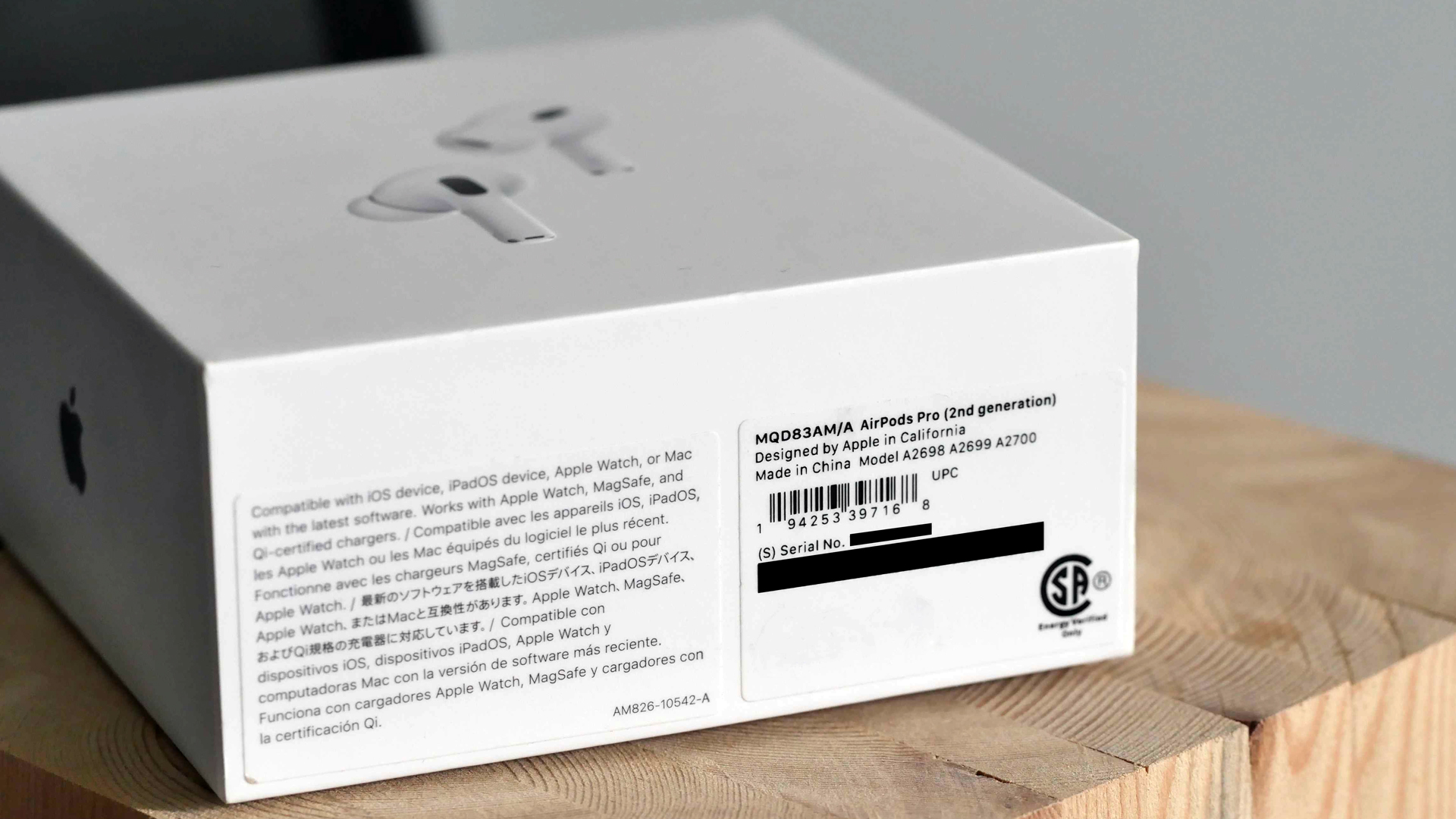
You can also look for other tells, like the logo. On the box of any AirPods, you should be able to locate an Apple logo. The bite mark is a perfect semicircle, so there should be no rounding on the points where it meets the outer bounds of the Apple logo. Additionally, if it’s a sticker or inset, also fake.
Finally, check the contents of the box to ensure that there’s more than just a manual in there for documentation: there should also be a warranty card and a safety sheet. If these are missing from your packaging and the box was sealed when you received it, there’s a decent chance you’ve got fakes.
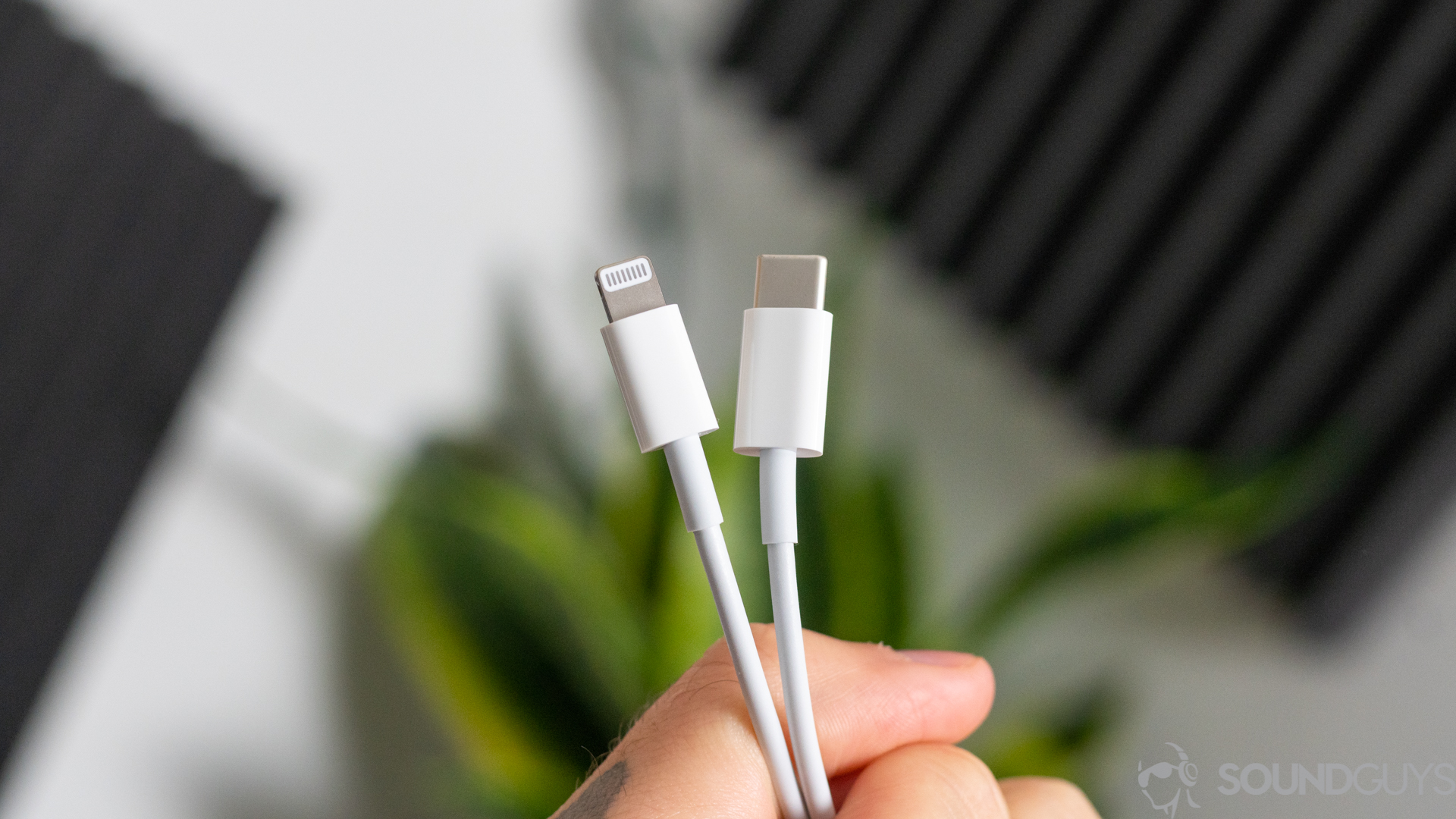
As obvious as it should be, there is also no such thing as AirPods with alternate colors unless you’re talking about the AirPods Max. You can’t buy red, blue, or black AirPods—they don’t exist. If you see AirPods in any color other than flat white, they’re fake, so don’t buy them.
Check the serial number
The serial number is less obvious. When you look at the same sticker, below the UPC should be small text that reads: “(S) Serial No.” and then a string of letters and numbers. This is your serial number. Bring the box to your computer or mobile device and go to Apple’s serial number checker to verify that it is, in fact, an Apple serial number. This will also have the benefit of helping you determine if you are actually holding stolen AirPods—even less cool than counterfeit ones.
Even if your serial number is confirmed, there’s no guarantee it’s a legit set of earphones, but they sure as hell aren’t if the tool says they’re not. At this point, you’ll have to open the packaging and attempt to pair the AirPods with your phone to investigate further. Next, you’ll have to confirm that the serial number of your AirPods is printed on the actual product itself and that it’s the same one on the box.
AirPods Pro 2nd Generation, and AirPods 3rd Generation serial location:
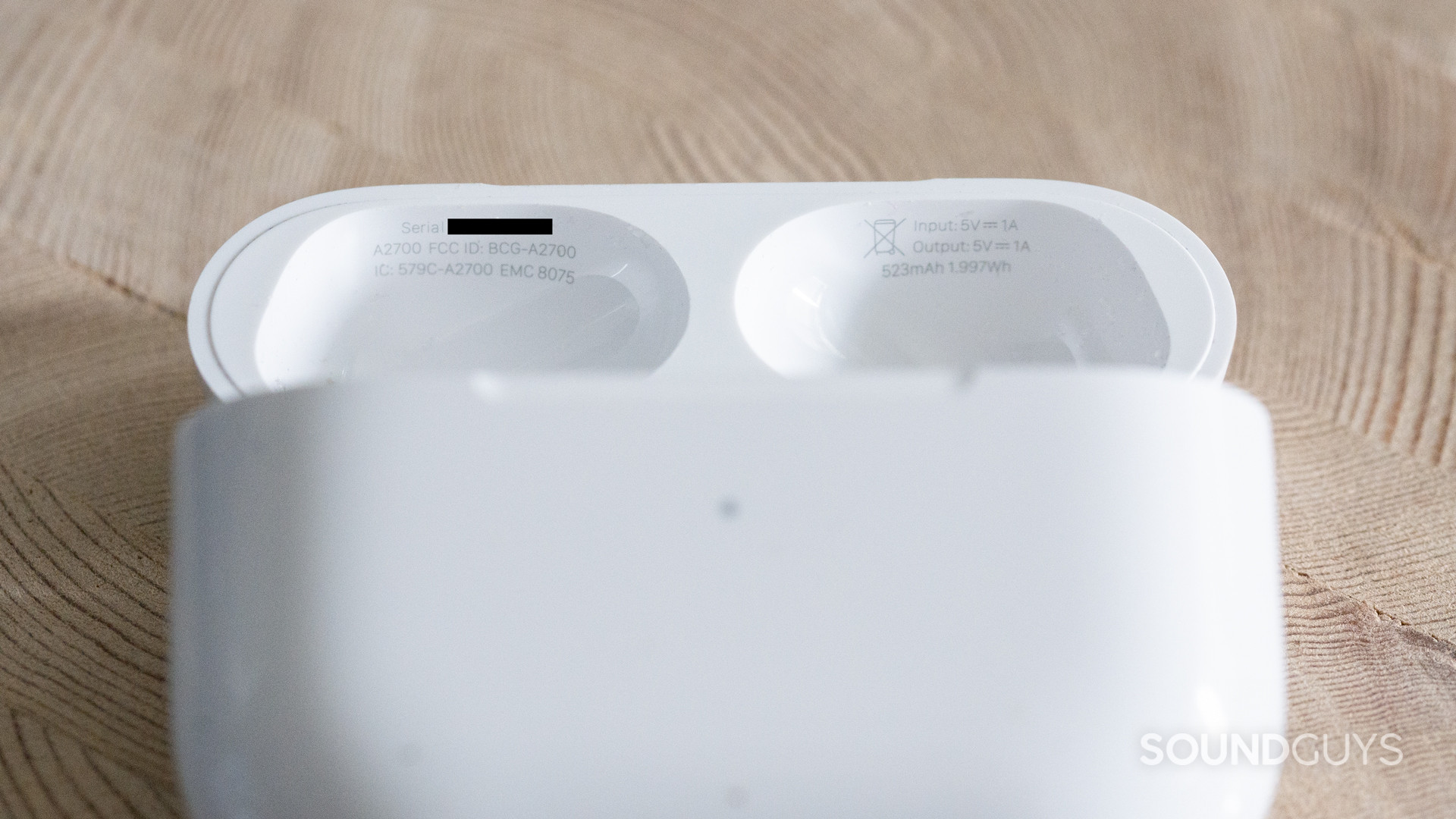
Open the charging case and look at the inside of the hinged lid. In the indent where the earbuds go should be a bunch of printed text. The serial number should be there, right near the edge of the case.
AirPods Max serial location:
Pop off the left ear pad and look just above the speaker. Right near the top should be a bunch of printed text, and your serial should be there.
Check the charging case
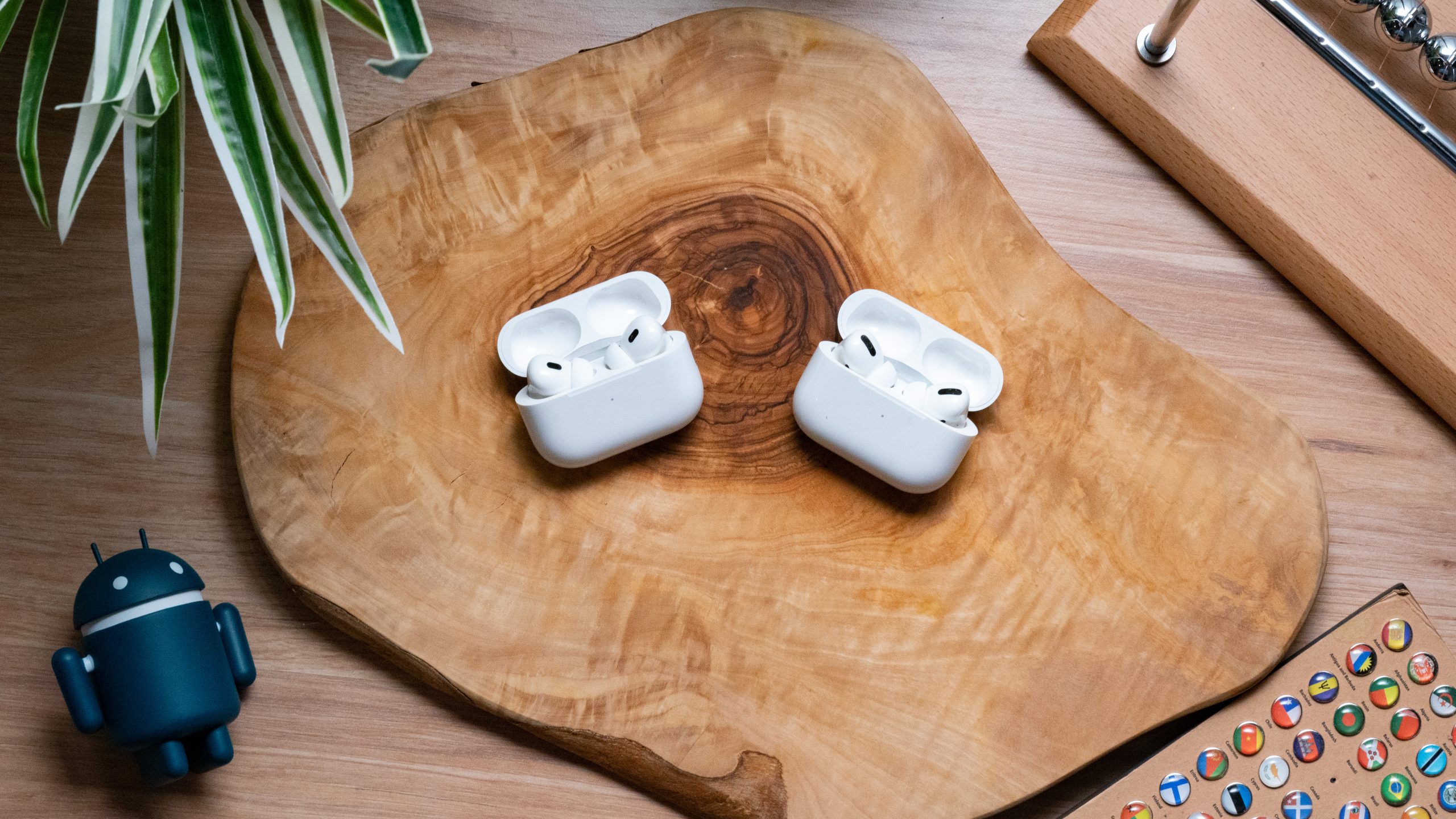
Before you connect your alleged AirPods, look at the outside of the case. On the bottom should be a Lightning port and not a USB-C or micro-USB port. The multifunction button on the back should sit flush with the casing and have next to zero slack. Other signs of counterfeiting are the results of cheaper manufacturing. For example, loose hinges, scuffs, dents, visible seams, and rough raised areas are all good hints that there were shortcuts taken in manufacturing—something Apple takes great care to avoid with AirPods.
Other tells you should be aware of are the LED color and placement. In some counterfeits, you can tell the AirPods are fake because they have a blue LED (not found in genuine AirPods) or the LED is in a really weird spot instead of the front of the case.
Note that the latest AirPods Pro 2 model (released in September 2023) features a USB-C port instead of Lightning. If you’re verifying this specific model, look for a USB-C port on the bottom of the case.
Check the AirPods themselves
With fake AirPods, you should be able to notice some signs that the earbuds weren’t made to spec. For example, if you notice any loose grilles or if the shape of the AirPods deviates from any of the photos on Apple’s site (or ours). You may also notice that the force sensor indent on the stem is replaced by a button or is simply missing. You should also be able to pick out minor issues like poorly fastened material, noticeable seams, ill-meshed seams, and circular-shaped nozzles.
Connect to your phone
For iPhone users, connecting to their phone will be a dead giveaway that their new earphones are legit. Say what you will about Apple products’ “walled garden” style, but a lot of the nonsense associated with being a completely open platform is less of an issue.
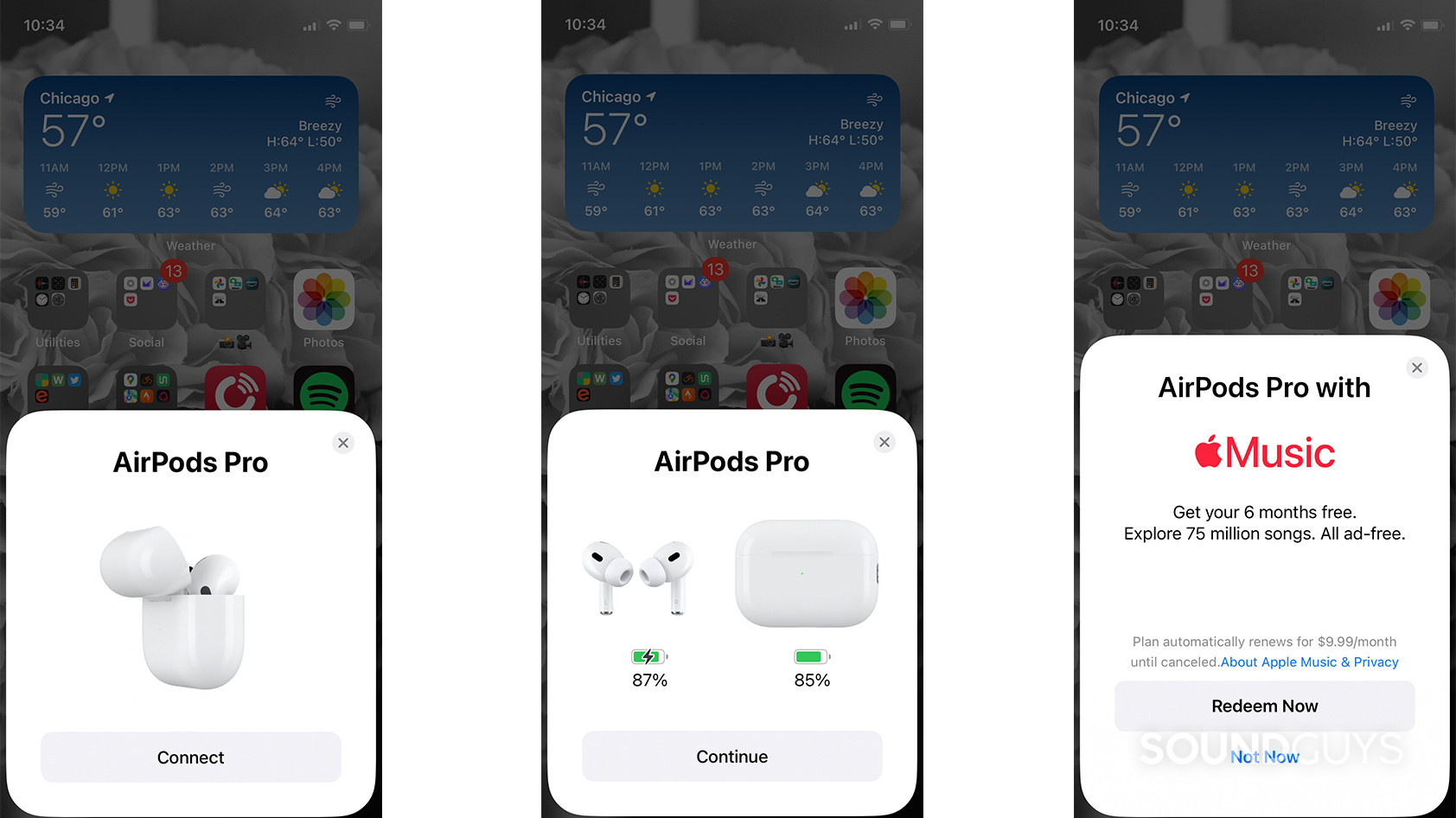
Open the case for your AirPods (or follow the pairing procedure for the AirPods Max if that’s what you have). If you have an iPhone, it will either start the pairing process or inform you that the phone can’t verify the product and that you need to connect to your “AirPods” conventionally. This is a great sign that you have a counterfeit pair. Though it’s still possible that something else is up, it’s extremely unlikely.
Other signs will be painfully obvious as well, as features like “find my” earbuds won’t work with counterfeits, as they’re Apple-exclusive features. While it may seem like a really obvious thing to say, it’s insanely difficult to make fake AirPods that will work with every feature Apple offers. For Android users, this will be a little trickier because these features do not work by default on your phone. It’s one of the many drawbacks of using Apple accessories with non-Apple source devices.
What to do if you have counterfeit AirPods
If you discover you have counterfeit AirPods, the best thing to do is to try getting your money back. Be prepared to be taken for a ride if the vendor knows what they’re doing, but sometimes they, too, are hoodwinked. Don’t try to confront anyone in person, and definitely don’t try to be a hero. Use Apple’s reporting tool to let them know what happened, and supply as much information as you can in order for the company to handle the issue the rest of the way. Though Apple has to play whack-a-mole with counterfeiters, they have a pretty good motivation for going after the manufacturers of such things.

If you’re in the United States and you bought your “AirPods” with a credit card, try talking to your credit card company about a chargeback—major credit card companies offer many purchase protection options you might not know about. Look on the back of the credit card you used for a customer service number, and they may be able to help you out. They may tell you to file a police report or file an insurance claim. At the end of the day, it will be a bit of work, and it may end up with nothing.
For the time being, the best way to come out on top when buying AirPods is to either buy directly from Apple or another reputable vendor in the first place.
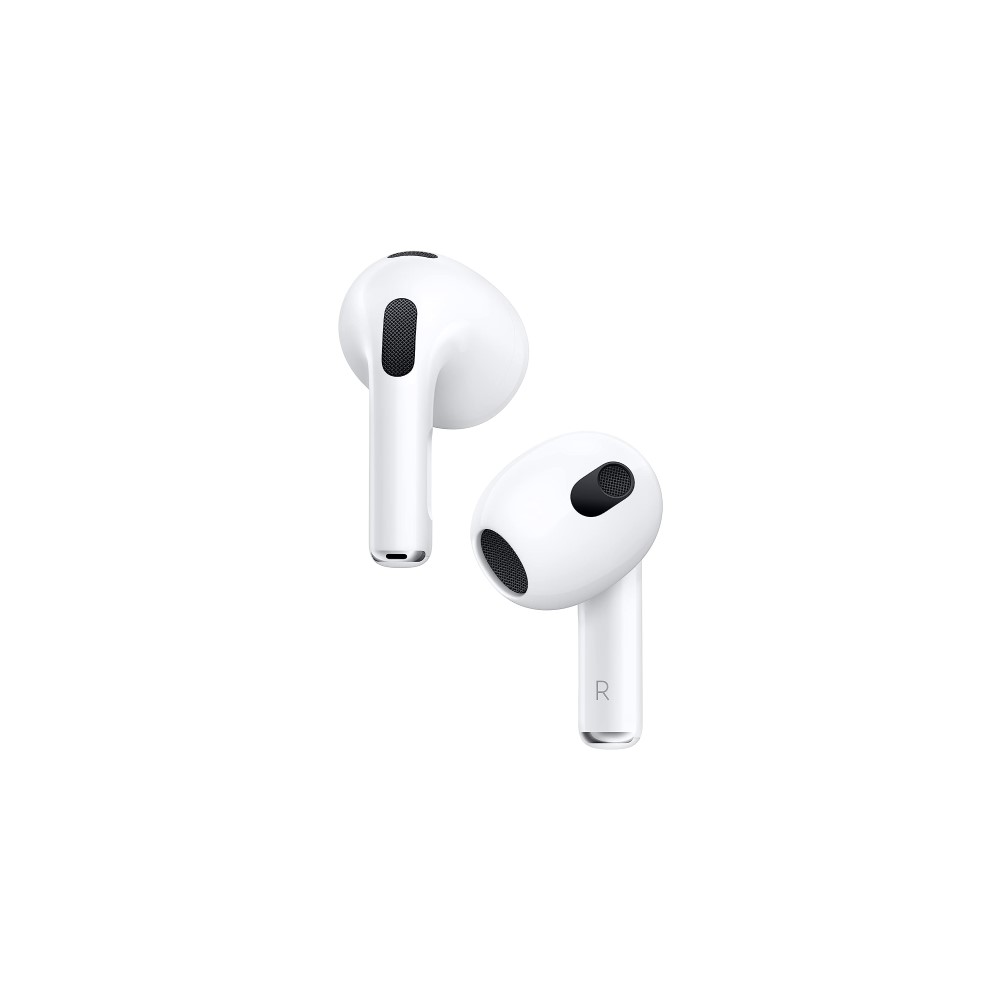
FAQs
No, we do not recommend buying fake AirPods. They often lack quality, may not have all the features of genuine AirPods, and could potentially harm your device. You get what you pay for. Purchase directly from Apple or reputable vendors to avoid counterfeits.
No, fake AirPods will not appear in Find My iPhone. The features like Find My earbuds won’t work with counterfeits, as they’re Apple-exclusive features.
We can’t guarantee that fake AirPods won’t damage or affect your iPhone, as there are numerous fakes out there from many vendors. Better to be safe than sorry and buy the real thing or something else.
They might, if you are lucky, but probably not as well as real ones, and they won’t have all of the Apple-exclusive features.
Real AirPods might fit in a fake AirPods case. However, that doesn’t mean they will work properly. Apple’s AirPods cases are specifically made to work with AirPods, and fake AirPods don’t charge in an authentic AirPods case.
No, they cannot. When the serial number of fake AirPods is tested on Apple’s Check Coverage online service, it will indicate that a purchase date cannot be validated, confirming that the AirPods are fake. Authentic AirPods always have a valid date of purchase, and it’s impossible for shady manufacturers to replicate this feature in the Apple system.
Some fake AirPods may try to include magnets to replicate the look and design of real AirPods. But again, they might not be implemented correctly or of the right strength and size to generate a similar sound.
No, fake AirPods are not better than real ones. They lack the advanced features, quality, and compatibility that genuine Apple AirPods offer.
Thank you for being part of our community. Read our Comment Policy before posting.